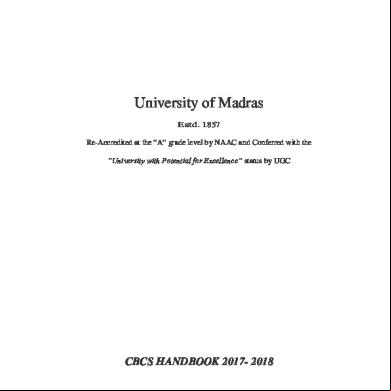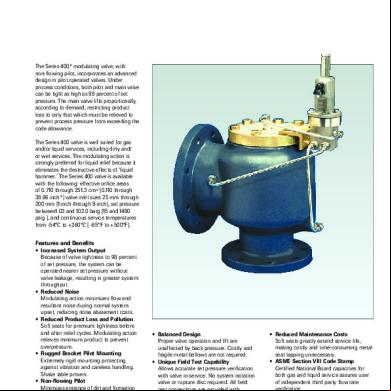Maneuvering Speed 45i3y
This document was ed by and they confirmed that they have the permission to share it. If you are author or own the copyright of this book, please report to us by using this report form. Report 3b7i
Overview 3e4r5l
& View Maneuvering Speed as PDF for free.
More details w3441
- Words: 571
- Pages: 3
Maneuvering speed 3 Maximum operating maneuvering speed VO Some aircraft have a maximum operating maneuvering speed VO. The concept of maximum operating maneuvering speed was introduced to the USA type-certification standards for light aircraft in 1993.[1][5] The maximum operating maneuvering speed is selected √ by the aircraft designer and cannot be faster than Vs n , where V is the stalling speed of the aircraft, and n is the maximal allowed positive load factor. √ At airspeeds slower than Vs n the aircraft will stall before the structure is subjected to its limiting aerodynamic load. The maneuvering speed or maximum operating maneuvering speed depicted on a cockpit placard is calculated for the maximum weight of the aircraft. Some Pilot’s Operating Handbooks also present safe speeds for weights less than the maximum.
A flight envelope diagram showing VS (Stall speed at 1G), VC (Corner/Maneuvering speed) and VD (Dive speed)
In aviation, the maneuvering speed of an aircraft is an airspeed limitation selected by the designer of the aircraft. At speeds close to, and faster than, the maneuvering speed, full deflection of any flight control surface should not be attempted because of the risk of damage to the aircraft structure.[1]
to calculate a safe speed for a lower The maneuvering speed of an aircraft is shown on a cock- The formula√used W weight is VA W2 , where VA is maneuvering speed (at 1 pit placard and in the aircraft’s flight manual but is not maximum weight), W2 is actual weight, W1 is maximum commonly shown on the aircraft’s airspeed indicator. weight.[6] In the context of air combat manoeuvring (ACM), the maneuvering speed is also known as corner speed or cornering speed.[2]
4 See also • V speeds
1
Implications
• American Airlines Flight 587
It has been widely misunderstood that flight below maneuvering speed will provide total protection from structural failure. In response to the destruction of American Airlines Flight 587, a CFR Final Rule was issued clarifying that “flying at or below the design maneuvering speed does not allow a pilot to make multiple large control inputs in one airplane axis or single full control inputs in more than one airplane axis at a time”. Such actions “may result in structural failures at any speed, including below the maneuvering speed.”[3]
5 References [1] Federal Aviation istration, Advisory Circular 2319A, Airframe Guide for Certification of Part 23 Airplanes, Section 48 (p.27) Retrieved 2012-01-06 [2] CNATRA P-821 (Rev. 01-08) “Flight Training Instruction, Advanced Naval Flight Officer (T-45C)". Department of the Navy, 2008. [3] Federal Aviation istration, 14CFR §25.1583 Final Rule Retrieved 2012-01-06
2
Design maneuvering speed VA
[4] 14 CFR §23.335(c)(2) Definition of Maneuvering Speed [5] USA 14CFR §23.1557 Retrieved 2012-01-06
VA is the design maneuvering speed and is a calibrated Maneuvering speed cannot be slower than airspeed. √ Vs n and need not be greater than V .[4]
[6] Jeppesen Instrument/Commercial Manual. 2000. ISBN 088487-274-2.
1
2
6
6
External links • 14 C.F.R. 23.335 “Design airspeeds”
EXTERNAL LINKS
3
7
Text and image sources, contributors, and licenses
7.1
Text
• Maneuvering speed Source: https://en.wikipedia.org/wiki/Maneuvering_speed?oldid=633614372 Contributors: Cherkash, Two Bananas, Smyth, Pietbarber, Hohum, Dracogen, Welsh, SmackBot, Cydebot, Alaibot, Fabrictramp, Davidbreton, Skrelk, Mike V, Dolphin51, JL-Bot, Raven-magpie, Addbot, Mikeash47, Debresser, Yobot, Myself488, Davearmbrust, Pilot850, DexDor, H3llBot, GTME and Anonymous: 10
7.2
Images
• File:F-104A_flight_envelope.jpg Source: https://.wikimedia.org/wikipedia/commons/7/79/F-104A_flight_envelope.jpg License: Public domain Contributors: T.O. 1F-104A-1 Original artist: USAF
7.3
Content license
• Creative Commons Attribution-Share Alike 3.0
A flight envelope diagram showing VS (Stall speed at 1G), VC (Corner/Maneuvering speed) and VD (Dive speed)
In aviation, the maneuvering speed of an aircraft is an airspeed limitation selected by the designer of the aircraft. At speeds close to, and faster than, the maneuvering speed, full deflection of any flight control surface should not be attempted because of the risk of damage to the aircraft structure.[1]
to calculate a safe speed for a lower The maneuvering speed of an aircraft is shown on a cock- The formula√used W weight is VA W2 , where VA is maneuvering speed (at 1 pit placard and in the aircraft’s flight manual but is not maximum weight), W2 is actual weight, W1 is maximum commonly shown on the aircraft’s airspeed indicator. weight.[6] In the context of air combat manoeuvring (ACM), the maneuvering speed is also known as corner speed or cornering speed.[2]
4 See also • V speeds
1
Implications
• American Airlines Flight 587
It has been widely misunderstood that flight below maneuvering speed will provide total protection from structural failure. In response to the destruction of American Airlines Flight 587, a CFR Final Rule was issued clarifying that “flying at or below the design maneuvering speed does not allow a pilot to make multiple large control inputs in one airplane axis or single full control inputs in more than one airplane axis at a time”. Such actions “may result in structural failures at any speed, including below the maneuvering speed.”[3]
5 References [1] Federal Aviation istration, Advisory Circular 2319A, Airframe Guide for Certification of Part 23 Airplanes, Section 48 (p.27) Retrieved 2012-01-06 [2] CNATRA P-821 (Rev. 01-08) “Flight Training Instruction, Advanced Naval Flight Officer (T-45C)". Department of the Navy, 2008. [3] Federal Aviation istration, 14CFR §25.1583 Final Rule Retrieved 2012-01-06
2
Design maneuvering speed VA
[4] 14 CFR §23.335(c)(2) Definition of Maneuvering Speed [5] USA 14CFR §23.1557 Retrieved 2012-01-06
VA is the design maneuvering speed and is a calibrated Maneuvering speed cannot be slower than airspeed. √ Vs n and need not be greater than V .[4]
[6] Jeppesen Instrument/Commercial Manual. 2000. ISBN 088487-274-2.
1
2
6
6
External links • 14 C.F.R. 23.335 “Design airspeeds”
EXTERNAL LINKS
3
7
Text and image sources, contributors, and licenses
7.1
Text
• Maneuvering speed Source: https://en.wikipedia.org/wiki/Maneuvering_speed?oldid=633614372 Contributors: Cherkash, Two Bananas, Smyth, Pietbarber, Hohum, Dracogen, Welsh, SmackBot, Cydebot, Alaibot, Fabrictramp, Davidbreton, Skrelk, Mike V, Dolphin51, JL-Bot, Raven-magpie, Addbot, Mikeash47, Debresser, Yobot, Myself488, Davearmbrust, Pilot850, DexDor, H3llBot, GTME and Anonymous: 10
7.2
Images
• File:F-104A_flight_envelope.jpg Source: https://.wikimedia.org/wikipedia/commons/7/79/F-104A_flight_envelope.jpg License: Public domain Contributors: T.O. 1F-104A-1 Original artist: USAF
7.3
Content license
• Creative Commons Attribution-Share Alike 3.0










